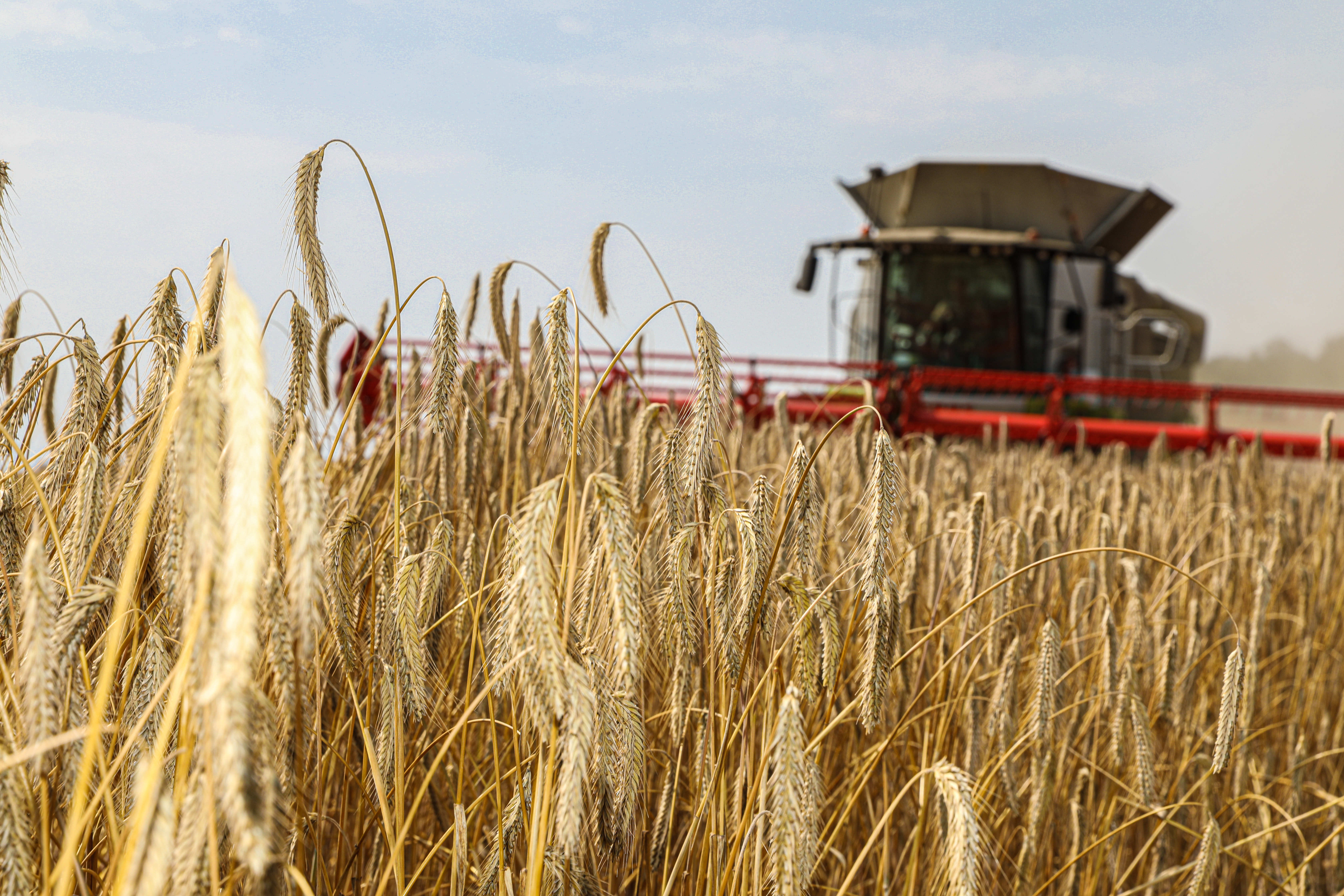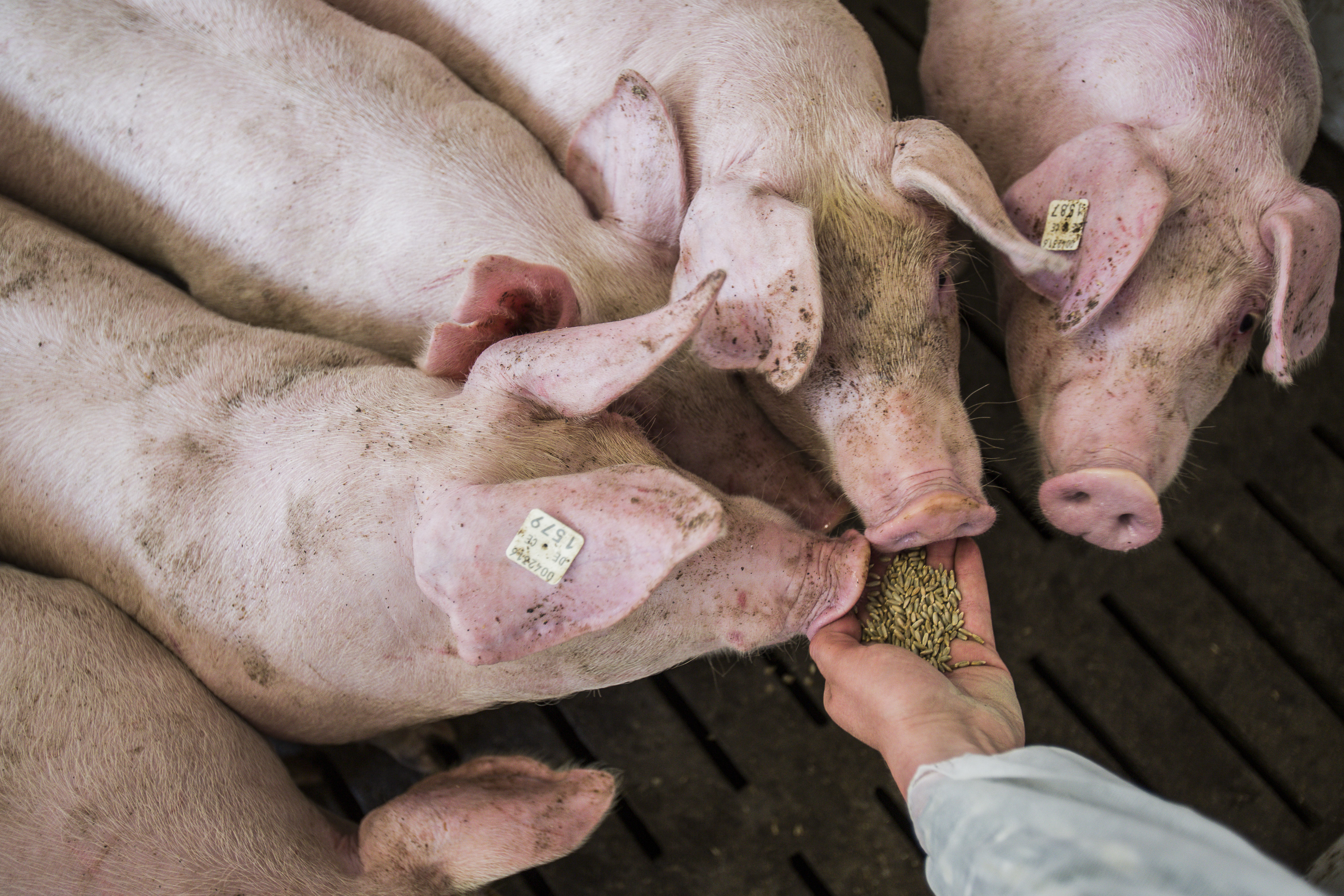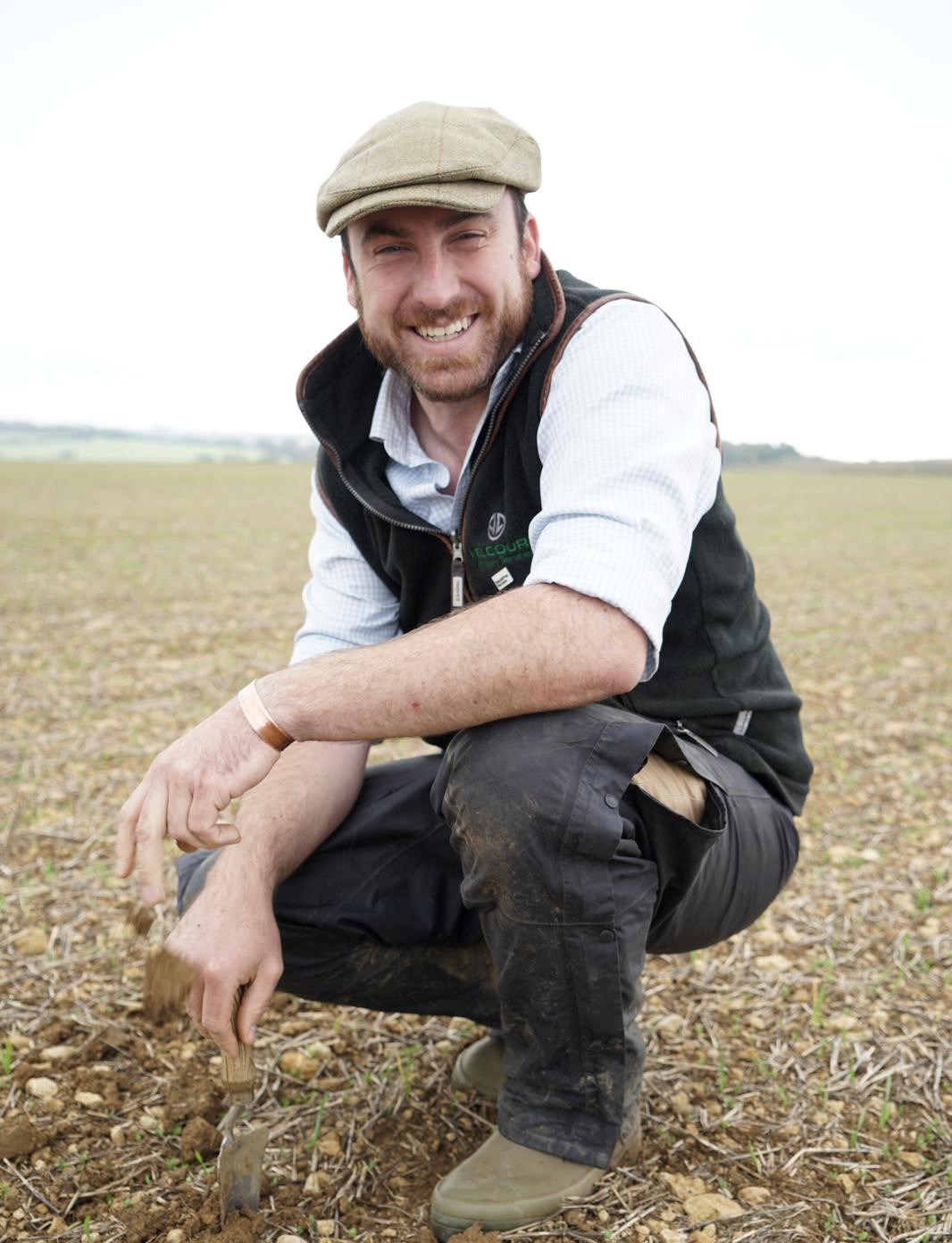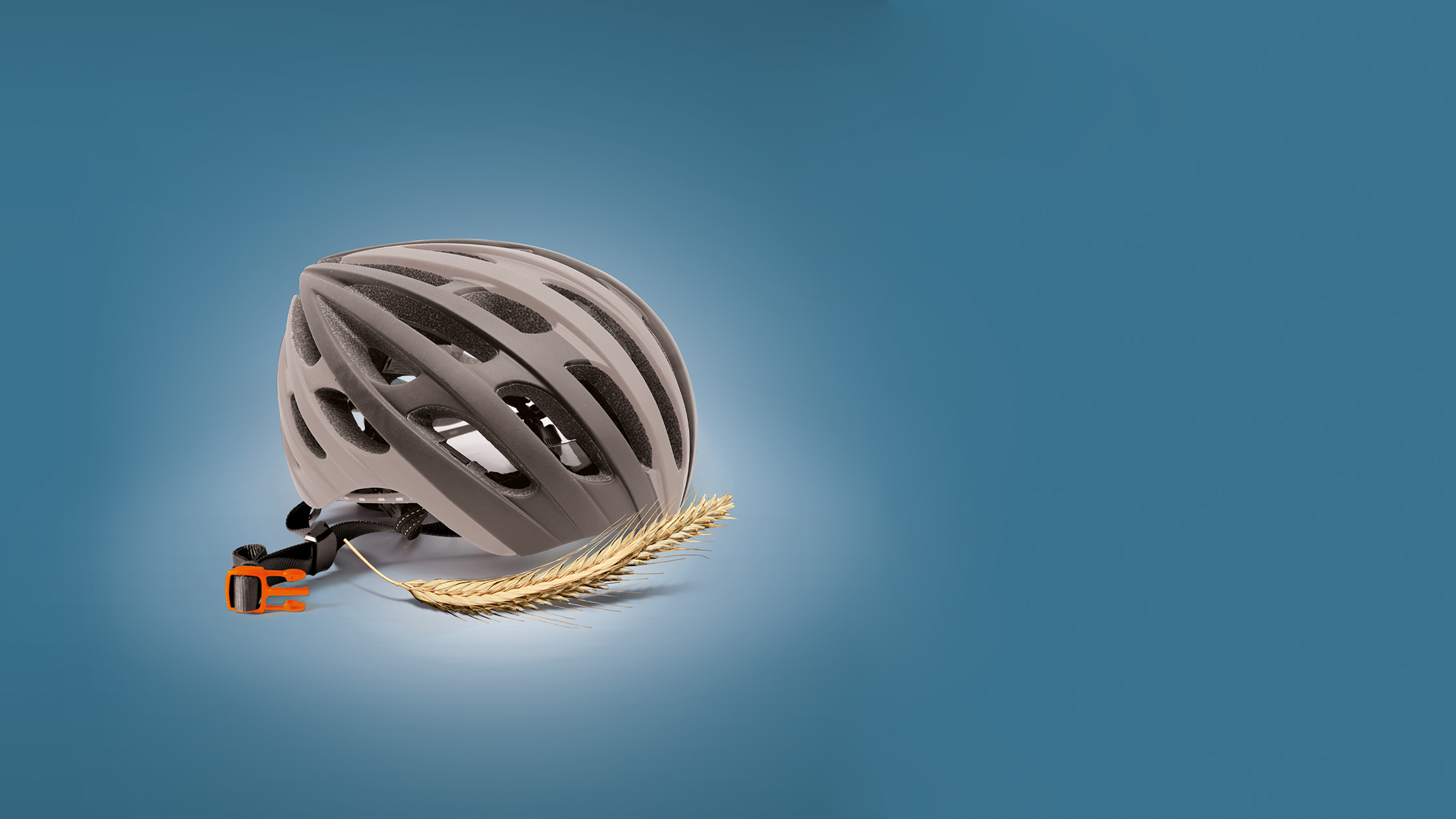Tangible benefits from hybrid rye
Rye is a well-established part of Norfolk estate’s rotation
“Rye has been grown here for malting and baking since 1990, but it remains an important part of our rotation,” William Gribbon, Farms Manager for Heygate Farms Swaffham Ltd, outlines.
Comprising some 6000 acres of fully irrigated Breckland around Swaffham and Beachamwell in Norfolk, the business dates back more than six decades. It was purchased in 1957 by the family behind Heygate & Sons, the UK’s largest independent miller, and is part of the Heygates group, which now employs over 900 staff and spans farming, flour and feed milling and baking. The Heygate family also owns a further 1000 acres in Bedfordshire and 1000 acres around Northampton produce milling wheat, oilseed rape and beans.
Heygate Farms Swaffham Ltd is managed by William Gribbon, who has held the position for the last 30 years, having taken over from his father, who started when the business extended to 1333 acres. Potatoes are the main crop, with 1000 acres of salad, ware, crisping, and chipping varieties grown on a one-year-in-ten rotation. This year’s programme also includes 500 acres of oilseed rape, 450 of winter barley, 350 of rye and 300 of wheat, together with 600 acres of spring barley, 140 of sugar beet and 120 of vining peas. There are also 200 acres of grass and 700 acres are let for carrot and onion production.
“The Heygate family take a long-term view and every aspect of how the farm is managed fits in with that approach,” William states. “The land here is mainly light sand over chalk and so the aim is to put as much organic matter back into the soil as possible to build the level of humus. As part of that approach, we have several pig units and rye fits well into the rotation because it produces a lot of straw which is used for bedding.
“We follow a wide rotation and believe that it is important to grow a broad spread of crops, both to generate optimum returns and minimise risk, be that from price fluctuations or extremes of weather. In today’s business environment it is essential to have an end market for the crops we grow as the production costs involved are high and ever increasing, so everything is on contract.
“Rye was first grown here 30 years ago because the area was so infested with rabbits that it was difficult to produce good crops of cereals. The situation is different now because rabbit numbers are much lower and the whole farmed area can be irrigated, but rye remains an important part of our rotations, which are very broad-based because of the high proportion of vegetable crops.
“We grow rye on the lightest land, and it works well because rabbits dislike its bitter taste. The crop is also extremely tolerant to dry conditions, which is important as the average annual rainfall in this area is 26″ and it often suffers from extended periods of drought.
“There is a strong market for grain rye and the straw is an important reason why we grow the crop. Some we bale for bedding the pigs, but the majority is chopped to increase soil humus, which is important because the stone separation required to produce high-quality root crops breaks down the soil structure.
“The split field rye trial that we carried out last year highlighted the significant yield and agronomic benefits of hybrids over the conventional varieties which we had been growing, mainly using farm saved and dressed seed. The conventional variety yielded 2.75 tons per acre, the hybrids 3.5 tons per acre. The significantly higher grain and straw yields convinced us that was the way to go, so this season is the first that all our rye is hybrid, KWS Trebiano. Hybrid seed is more expensive, but the additional outlay is more than offset by the lower seed rate and significantly higher yield.
“The land was ploughed and pressed, then the crop was drilled with our 6m Horsch Sprinter, although where it followed potatoes, we just went through with a Sumo subsoiler and drilled. It takes about a week to drill all the rye and the aim is to get it in the ground by the third week of October to ensure good germination and give the crop the best chance to get its roots well down into the ground. We used a seed rate of 80kg/ha, which is half the 160kg/ha used previously with conventional varieties.
“This winter has been very wet, and the water table became so full that even here some areas flooded: the last time I saw that was 20 years ago. Despite the high rainfall, the hybrid rye was in fine condition coming out of winter and as the soils dry the roots will go down deep. The key is to keep the crop upright with a robust PGR program, because rye doesn’t like feeding head-first into the combine and harvesting it when flat is not a job that anyone wants.”
Hybrid rye demonstrates significant potential
Richard Bailey of Farmacy plc provides agronomy advice for Heygate Farms’ combinable crops, including winter wheat, winter barley, spring barley, oilseed rape and rye.
“We are always looking to extend rotations where possible, but the lighter, less productive soils which characterise parts of Norfolk are not so well suited to wheat production, particularly second wheats, so viable options have been limited,” Richard states.
“Interest in rye has taken off during the last few years, partly on the back of increasing demand from AD plants, but more recently for grain rye. Many of my clients have asked about the possibility of growing the crop, but the main drawback has been the lack of open market demand, without which it is not a viable option. With interest from the pig sector increasing, that is beginning to change.
“Heygate Farms have grown rye for many years because it fits in well rotationally. Until two years ago, they produced 120ha of Admiral, a conventional variety, on contract to Crisps Malt, but last year hosted a split-field trial comparing it with two hybrids, KWS Eterno and KWS Edmondo. Although these were only slightly shorter, the plants were far more robust, which is important in a crop that can grow to almost two metres high. Managing it can be a challenge, but a significant benefit is that the crop produces a high volume of straw which can be sold to generate additional income.
“Extremes of weather made last year incredibly challenging, particularly on lighter soils. Establishing crops was not difficult, but the extremely dry spring limited their potential significantly. Being incredibly resistant to dry conditions hybrid rye was far less affected than winter barley, but the straw was 20cm to 30cm shorter than it would normally have been. Nevertheless, the trial proved beyond any doubt that hybrid rye was the way forward, so this season all of Heygate Farms rye is KWS Trebiano.”
A multi-purpose F1 hybrid rye which can be used for AD, or to produce grain, KWS Trebiano offers a leading harvest index (grains/ear) with excellent Hagberg (HFN) and sample quality. An excellent option for pig finishing or sow rations, it delivers high grain and straw yields combined with low growing costs. The variety is also used in the food industry by manufacturers of products such as flour, breakfast cereals, and for distilling or malt.
Easy to manage
“We aim to drill hybrid rye between the end of September and early October, generally using a seed rate of 200 -220/m2 at the outset but increasing to 250/m2 if sown later. Where rye follows a previous crop of rye, winter barley or later lifted root crops, the land will usually be ploughed to help minimise the risk of ergot, which is further reduced by the KWS PollenPlus technology incorporated into KWS Trebiano.
“In agronomy terms, hybrid rye is fairly easy to manage and has lower levels of inputs than other cereals. While some growers will treat it as a low input crop, where high grain yields are the goal it must receive an appropriate level of inputs. My recommendation to Heygate Farms is for around 150 KgN/ha, plus Sulphur, which goes on as solid fertiliser in two splits. We are currently evaluating Advance 66™ (Verdesian), a Zinc based nutrient complex to assess its impact on root development early in the season.
“Hybrid varieties have much stronger straw then conventional types, but our aim is to build on that quality by using a robust PRG program to further reduce the risk of lodging, because combining flat rye is not a job that anyone wants. This includes trinexapac–ethyl at GS30, another application of trinexapac-ethyl at GS32, then ethephon + mepiquat chloride at GS37.
“The early PGR is all about encouraging strong root structures to develop so they penetrate deep into the soil to find moisture, and to thicken the stem bases to minimise the risk of lodging. The later application is all about shortening the crop. Timing PGR applications correctly is critical because the crop wakes up quickly in the spring and can shoot through the key growth stages very quickly, so agronomists and growers need to be on the ball.
“There are no inherent weed pressures at Heygates Farms, but from my previous experience of growing hybrid rye for AD I know that the crop is highly competitive and does an excellent job of suppressing any weeds which are present.
“Last autumn, which was very wet, I recommended a CTU/DFF/PDM mix, a cost-effective pre-emergence product, to control meadow grass and any broad-leaved weeds which might be present. This was followed in the spring with a low-rate Sulfonylurea herbicide in the form of thifensulfuron + tribenuron to take out any remaining broad-leaved weeds.
“The average annual rainfall in this area is 650mm, but after another incredibly wet winter we were already way over that figure by the start of February. Even so, the fields of hybrid rye looked excellent. In terms of disease pressures, the main potential challenges will be mildew and brown rust. These can be easily and effectively be controlled with triazole and Strobilurins, but we have started to use Solatenol/PTZ at GS 39.
“It is not necessary to spend a fortune on growing hybrid rye, but an appropriate level of investment is required to optimise its potential benefits and performance. The key is to have a robust, pro-active PGR strategy in place.”
Hybrid rye is a welcome alternative crop for arable growers
“The development of new varieties of hybrid rye and markets for the grain are exciting and extremely welcome developments for growers seeking a viable cropping alternative which will help make light-land rotations more agronomically and financially resilient to changing weather patterns,” states Peter Riley.
A well-known and highly regarded arable agronomist, Peter works primarily in Suffolk and Norfolk advising clients of Farmacy plc, which provides independent agronomy services to growers across 300,000ha in the East Midlands, East Anglia and Cotswolds. He is also Chairman of the AHDB Recommended List for barley, oats, and other cereals, including rye.
“The Recommended List team which I chair is fully aware of the increasing interest in hybrid rye, not only from growers but also end-users such as pig producers, feed compounders, food manufacturers and distillers. To reflect that and help growers throughout the UK to better understand how individual varieties perform under different conditions, the RL team has added one additional rye research trial this year, sited in the North of England.
“Cereal hybrids have great potential for the future and you only have to look at the performance of some hybrid barleys, particularly in low rainfall areas such as East Anglia, to see the benefits,” Peter states. “Although there is still a decent market for spring and winter malting barley, only so much can be grown because of limited demand, and there is no question that a viable alternative to winter feed barley is required for lighter land situations.
“Over the last five years the area of rye which I look after has more than doubled and in the last two years an increasing number of my clients have shown interest in growing the crop. Until recently, the market potential was very restricted and being able to grow it depended on what contracts were available, either from AD plants, which tend to use an 80 per cent maize, 20 per cent wholecrop rye mix as their feedstock, or for grain under the Ryvita contract. The requirement of those markets was limited and has plateaued, with little potential for growth.
“Having another cropping option on the dry sandy loam and loamy sand soils which are common in my area, and where growing oilseed rape or producing consistent yields of wheat and barley is becoming increasingly difficult, is a very welcomed development.
“During the last two seasons we have experienced very changeable weather, with extremely wet winters and dry, hot conditions in spring and summer. Though these are less than ideal, hybrid rye has achieved some amazing results, even on poor soils. However, the key to the crop’s future is to develop markets for the grain and give more growers access to open market contracts.
“East Anglia is one of the largest areas of pig production in the UK and home to many of the country’s leading pig producers, some of whom are already feeding rye in rations. The potential demand from this sector, and therefore for the development of the hybrid rye area, is significant and has the potential to increase substantially. However, the scale and pace of uptake will depend on nutritionists being made aware of the benefits and convincing their clients to substitute rye for wheat and barley.”
Easy to manage
“Hybrid rye will appeal primarily to growers on lighter, drought prone soils as an alternative to winter and spring barley, and although not restricted to those soil types I would not necessarily recommend it on stronger land because of the increased risk of lodging. It is not quite as early to combine as winter barley but ahead of wheat, so it helps to spread the harvest, which is an important consideration where labour and machinery are fully utilised.
“In terms of drilling dates, hybrid rye is very versatile, which can be helpful in helping to minimise levels of BYDV, control blackgrass, or allow time to repair soil damage after maize has been harvested. I would look to drill the crop during September and have used a range of seed rates from 150/m2 to 220m2, or higher for much later drilling, although most farms will not go far wrong using the standard 200 seeds/m2.
“Hybrid rye is competitive in terms of its growth habit and will help to out-compete weeds, which may allow lower levels of herbicides to be used. The key factor is that all crops need correct management to achieve their full potential, and hybrid rye is no exception, so rather than regarding it as a ‘low-input’ crop think of it as being ‘lower input’. Most of my clients who have grown the crop on loamy sand and sandy loam soils have done so correctly, with appropriate levels of inputs. That approach has yielded good results and encouraged most to grow it again.
“Hybrid rye does respond well to reasonable levels of inputs and Farmacy’s policy is to push crops hard to create the biomass which is necessary to optimise yields. An appropriate level of PGRs should therefore be used to avoid any chance of lodging, even where it is grown on light soils, because no-one wants to combine flat rye.
“Good quality fungicides at robust levels should be part of a well-considered preventative and protectant programme to stay on top of brown rust, which is the principal fungal disease risk and a factor in the areas where I operate, especially with early sowings. Strobilurins have a key role to play in achieving this, as do SDHIs such as Velogy/Elatus™ Era which have worked well
“As with all hybrids, it is important to apply sufficient early Nitrogen to maximise the crop’s potential, generally in two applications. The first should go on in mid- to late February, the second by the end of March or early-April at the latest, with a third in May if the aim is to maximise grain protein. In my experience hybrid rye requires 25%-30% less Nitrogen than winter wheat to fulfil its potential, and that represents a significant financial saving, while the spend on fungicides is generally £60-£70/ha, compared with £90-£130/ha for winter wheat.
“Ergot remains a potential issue in rye, and although it has little direct effect on yield contains large amounts of toxic alkaloids (mycotoxins) which can pose a risk to animal and human health if consumed. Ergot-contaminated grain may be rejected, require cleaning, or achieve a lower price to reflect this, so it is important to minimise the risk. If present, then colour grading can be used to overcome the problem, albeit at a cost.
“Yields of all crops are significantly impacted by soil type and weather conditions throughout the growing season, but I have seen 9t/ha from hybrid rye grown on fairly poor land where wheat and winter barley would not have performed nearly so well. Gross margins can be highly competitive with, or exceed those of other cereals, particularly with winter barley prices at current levels. However, my advice, as always, is to look more at the contribution the rotation makes to the bottom line of your business, rather than just an individual crop gross margin.”
Winter hybrid rye brings numerous benefits
“Winter hybrid rye provides a range of benefits,” states Kieran Walsh, Independent Regional Agronomist for Velcourt Advisory Services in Oxfordshire, Gloucestershire, Wiltshire & Dorset.
“Over the last few years, one of my clients has put a lot of time and effort into working with local markets and end producers. This has led us to integrate several different crops into the rotation, one being winter hybrid rye. Introducing it into the cropping mix has led to numerous benefits and combinations of different systems approaches with regards to inputs and agronomy.
“Winter hybrid rye is well suited to the client’s soils, which are free draining and, being in an area where annual rainfall is under 700mm, can easily drought out during late spring. This area also suffers from blackgrass, so the thought of drilling in mid-September, which is the optimum sowing date for rye, can be a little worrying. However, good early establishment using a robust seed rate of around 225 /m2 leads to very thick, well tillered bands of rye come January.
“The crop’s extensive tillering limits the amount of blackgrass present within the sowing band, without resorting to stacking residual herbicide options as we might have to do with wheat. Sowing in bands also allows us to inter-row hoe, which dramatically reduces herbicide usage by 70.1% compared to wheat.
“Winter rye now represents 12% of the winter cereal area on this client’s farm, so mid-September sowing spreads the autumn workload and subsequently allows the drilling team to focus on the wheats.
“Drought can be a serious issue on the brash soils. Both barley and wheats can suffer from extremes of yield, but although it is not completely risk free, rye can tolerate more extreme peaks of drought and it is not affected so badly.
“On a farm which grows a range of other winter crop, comprising winter oilseed rape, beans, barley, and wheat, together with spring barley, triticale and linseed, another factor in rye’s favour is that it does not require so much fungicide. The fact that in rye we have reduced our fungicide use by 77% leaves the sprayer more time to focus on the other crops.
“Two aspects of growing rye that do need to be monitored are the growth habit and slug pressure. The crop’s vigorous development in the spring has meant that the use of PGR has increased by 96%, representing an extra outlay of £6.78/ha compared to wheat. Slugs enjoy a good feeding season on rye seed, so we have seen some increases in the use of ferric phosphate, which can differ from 0% - 28%.
“For us, a key advantage of growing rye is that it requires less nitrogen and we have seen a reduction of 44.7% compared to wheat, or an average of 29.5% less nitrogen across all crops. Utilising CO2 calculators to compare the CO2 emissions of wheat and rye, we have calculated that growing rye has reduced CO2 output by 53kg per tonne.”
Your consultants


.jpg)








